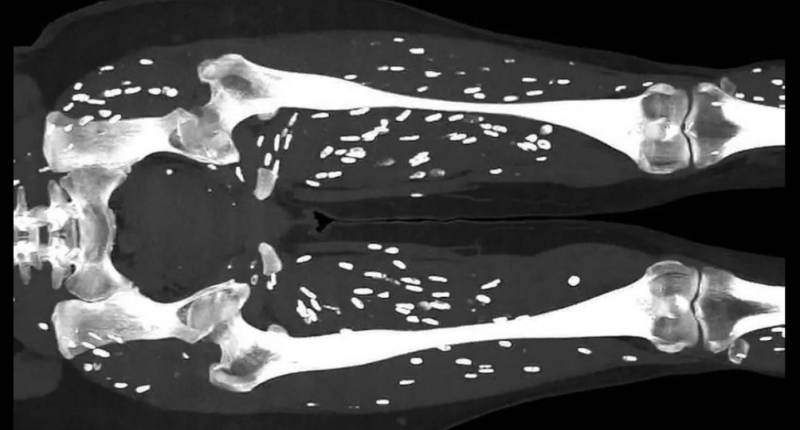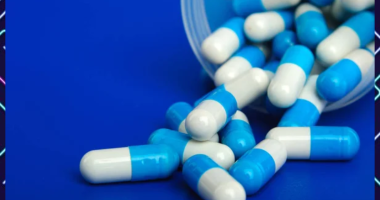In a shocking revelation, Dr. Sam Ghali, an emergency room physician from the University of Florida Health Jacksonville, recently shared a CT scan that depicted a patient’s legs filled with parasites. This alarming case highlights the dangers of consuming undercooked pork, specifically related to a parasitic infection known as cysticercosis. In the meantime, let’s understand the major intricacies of cysticercosis and the importance of food safety.
What Is Cysticercosis?
Cysticercosis is an infection caused by the larval stage of the pork tapeworm, Taenia solium. It occurs when humans ingest food or water contaminated with T. solium eggs or have poor hygiene and touch something with the eggs on it, then put their hands in their mouth. The eggs hatch in the intestines and the larvae travel through the body, forming cysts in tissues like the brain, muscles, skin, and eyes. This can cause a variety of symptoms depending on where the cysts form:
- Brain (neurocysticercosis): Seizures, headaches, confusion, hydrocephalus
- Eyes: Vision problems, blindness
- Muscles: Painless lumps under the skin
Cysticercosis is most common in developing countries in Latin America, Asia, and Africa where sanitation is poor and pork is undercooked. It is rare in the United States but can occur in immigrants from endemic areas.
Diagnosis is made by imaging tests like CT or MRI scans, antibody blood tests, and sometimes a biopsy of a cyst. Treatment depends on the location and number of cysts but may involve antiparasitic medications like albendazole or praziquantel, steroids, anti-seizure drugs, and rarely surgery.
Cysticercosis can be prevented by thoroughly cooking pork, improving sanitation and hygiene, and treating people infected with adult tapeworms to stop the spread of eggs. With proper treatment, the prognosis is usually good unless there is permanent damage to the brain, eyes, or other organs.
The Case: A Closer Look at the CT Scan
Dr. Ghali’s post on social media showcased one of the most extreme cases of cysticercosis he had encountered.
- CT Scan Findings: The scan revealed multiple cysts within the patient’s leg muscles, a clear indication of the parasitic infection’s severity. This case serves as a stark reminder of the consequences of consuming improperly cooked pork.
- Patient Background: While specific details about the patient were not disclosed, the case emphasizes the need for awareness regarding food safety practices, especially in regions where undercooked pork is culturally consumed.

Epidemiology of Cysticercosis
Cysticercosis remains a significant public health issue, particularly in developing countries where pork consumption is common and food safety practices may be lacking.
- Global Prevalence: According to studies, the prevalence of T. solium cysticercosis varies widely, with higher rates reported in Latin America, sub-Saharan Africa, and parts of Asia.
- Statistics: In Colombia, for instance, a national serosurvey indicated a seroprevalence of approximately 8.6% for T. solium antibodies among the general population, highlighting the widespread nature of this infection.
Preventive Measures and Food Safety
To mitigate the risk of cysticercosis, several preventive measures are crucial:
- Cooking Practices: Thoroughly cooking pork to an internal temperature of at least 145°F (63°C) can effectively kill the larvae.
- Public Awareness: Education campaigns are essential to inform communities about the risks associated with undercooked pork and the importance of proper food handling and cooking techniques.
- Regulatory Measures: Implementing stricter regulations on pork production and meat inspections can help reduce the incidence of cysticercosis.
Conclusion
Dr. Ghali‘s alarming case serves as a crucial reminder of the potential dangers associated with consuming undercooked pork. By understanding cysticercosis and implementing effective food safety practices, we can significantly reduce the risk of this debilitating infection. Awareness and education are key to preventing future cases and protecting public health.
Also Read | 9 Worst Foods Destroying Your Muscles







